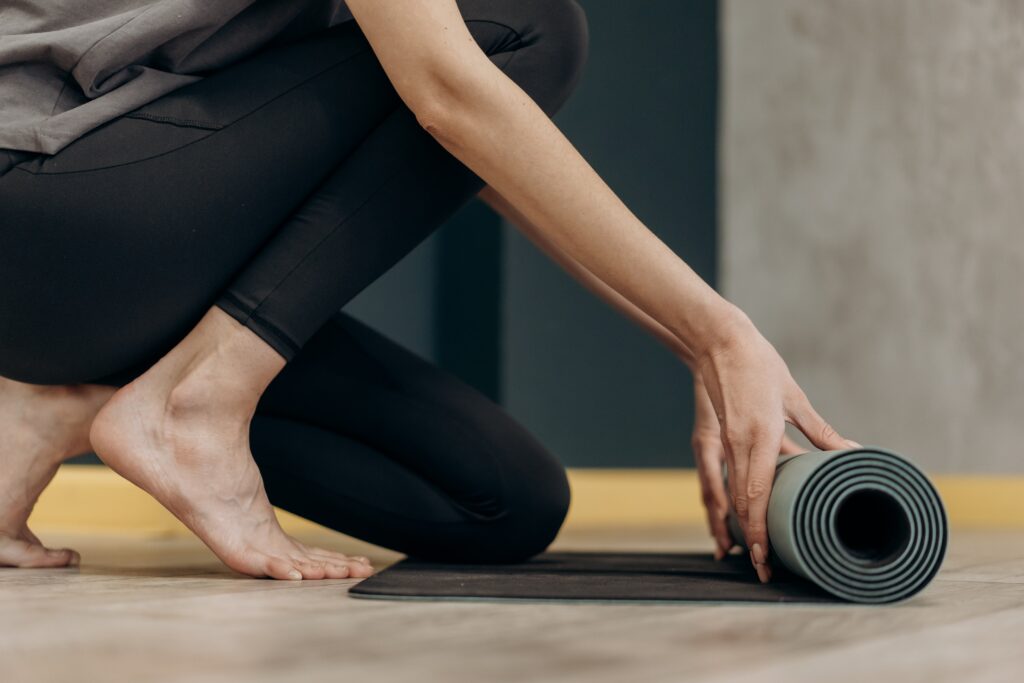Introduction
Yoga, with its holistic approach towards wellness, offers immense health benefits ranging from improved flexibility and strength to stress reduction. However, like any physical activity, it also carries potential risks of injuries. Understanding these risks and knowing how to navigate them is crucial to maintaining a safe and effective Yoga practice.

Potential Risks in Yoga
Most Yoga injuries result from overuse or misuse of the body. Repetitive strain on particular muscles and joints or incorrect alignment can lead to various issues, including sprains, strains, and even more severe injuries. For instance, postures that involve extreme bending or twisting of the spine, or significant pressure on the neck and shoulders, like Sarvangasana (Shoulder Stand) or Sirsasana (Headstand), can potentially cause injuries if performed without adequate preparation or supervision. Overstretching in asanas like Uttanasana (Standing Forward Bend) or Hanumanasana (Monkey Pose or Splits) may lead to muscle tears or ligament injuries if not approached mindfully.
Preventing Injuries in Yoga
- Learn Under Expert Guidance: A knowledgeable Yoga instructor can provide precise instructions, feedback, and modifications necessary for safe practice. They can help you maintain correct alignment, engage appropriate muscles, and relax in each pose, significantly reducing the risk of injury.
- Listen to Your Body: Cultivating body awareness is integral to Yoga. Paying attention to the sensations arising in different postures can help you discern between good and bad pain. If you experience sharp pain, dizziness, or extreme discomfort, it’s your body signaling you to back off.
- Understand Your Range of Motion: Recognizing that everyone’s body is unique and respecting your individual range of motion is essential. Overreaching your body’s current capacity can cause harm. Gradually and patiently work towards more advanced postures.
- Proper Warm-up and Cool-down: Warm-up exercises increase circulation, preparing your muscles for activity. Conversely, cool-down exercises help your body return to its resting state, minimizing post-exercise stiffness and discomfort.
- Rest and Recovery: Allow your body adequate rest to recover and heal. Following the traditional Ashtanga Yoga practice, take a day off each week, and abstain from practice on full moon and new moon days, when your body’s energy is considered to be in flux.
Specific Situations and Considerations
- Practice During Menstruation: During menstruation, women are advised to avoid strenuous practices. This is because the pranic or life energy in the body follows a downward flow during this period, and certain practices may interfere with this natural process.
- Pre-existing Injuries: If you have a pre-existing injury or medical condition, consult with your healthcare provider and inform your Yoga instructor about it. They can suggest modifications and preventive measures to ensure that your practice does not exacerbate the condition.
Caring for Injuries
If an injury occurs, immediate and appropriate care is crucial. Seek medical attention promptly. Rest the injured part and follow your healthcare provider’s advice. Once healed, gradually resume your practice, being extra careful not to overstrain the healed area.
Importance of a Mindful Practice
Maintaining mindfulness during your practice can significantly reduce the risk of injury. Stay focused on your body’s movements, your breath, and the sensations arising in each posture. This heightened awareness helps you to respond to your body’s needs promptly and appropriately, preventing overuse and strain.
Conclusion
While yoga poses certain risks, these can be effectively managed with proper guidance, mindful practice, and a respect for the body’s limits. By placing more emphasis on the process rather than the end goal, we can ensure that the practice of Yoga remains a safe and beneficial journey towards holistic health and wellbeing. Understanding and acknowledging the potential for injuries is not a deterrent from practicing Yoga but a pathway towards developing a more insightful, respectful, and fulfilling practice.


